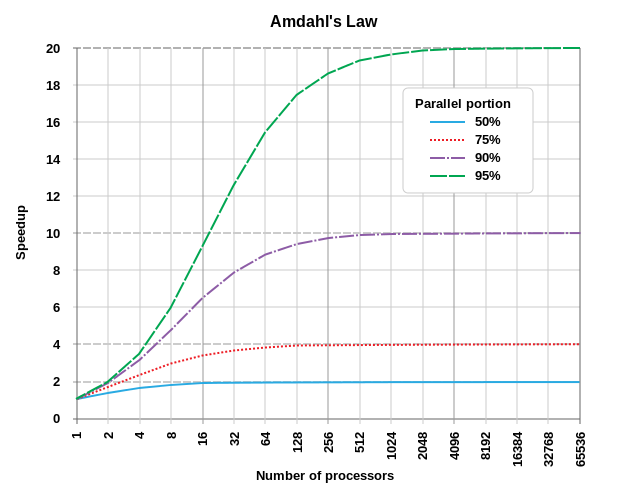
"The 90-9-1 principle suggests that within an internet community such as a wiki, 90% of participants only consume content, 9% edit or modify content and 1% of participants add content."
"The first 90 percent of the code accounts for the first 90 percent of the development time. The remaining 10 percent of the code accounts for the other 90 percent of the development time."
"Amdahl's Law is a formula which shows the potential speedup of a computational task which can be achieved by increasing the resources of a system. Normally used in parallel computing, it can predict the actual benefit of increasing the number of processors, which is limited by the parallelisability of the program."
"A 2014 study of four digital health social networks found the top 1% created 73% of posts, the next 9% accounted for an average of ~25% and the remaining 90% accounted for an average of 2% (Reference)"
Many named laws and principles capture recurring patterns in software development, collaboration, and performance. The 90-9-1 principle describes how most online communities are dominated by a small fraction of creators, with the majority largely consuming content. The 90-90 Rule wryly captures how initial progress often underestimates remaining work, reflecting completion difficulties and diminishing returns. Amdahl's Law quantifies limits to parallel speedup by showing that overall gains are constrained by non-parallelizable portions of a task. Real-world studies and examples are used to illustrate these patterns and the uneven distribution of work and benefit.
Read at Hacker-laws
Unable to calculate read time
Collection
[
|
...
]